





| Mandarin Duck (Aix galericulata (Linnaeus, 1758)) |






|
|
Scientific name: Aix galericulata (Linnaeus, 1758) Common name: Mandarin Duck French name: Canard mandarin Order: Anseriformes Family: Anatidae Size: Body size : 41 to 49 cm; Wingspan : 65 to 75 cm. Habitat: Fresh water ponds of any size bordered by woodlands with trees very close to water. Food: Omnivorous: Grains and fruits picked in woodlands, fishes and water insects caught in ponds. Nesting: The nest is a cavity in the trunk of a tree and can be at a height of 10 meters. There are 9 to 12 ducklings per brood. Called by their mother, they have to make a huge leap down from the nest to ground. Migration: Asian populations move to south-east China or to south Japan in winter. Geographic area: Asia except extreme North, introduced to Europe starting from England where birds escaped from collections. |
The top of the male Mandarin Duck's head is green and russet. The side of the head is white. The bill is red. A tuft of orange feathers hangs down to the base of the neck. The chest is bordered by two pairs of white and black lines. The underside of the body is white, the wings are ruddy and end with two brown orange "sails". Females are very different. Their plumage is dull brown with a paler under side. There is a white line down the eye and another one near the bill. Late spring, males moult and then look like females. In China, Mandarin Ducks are regarded as symbol of fidelity. |
| [To know more about the Mandarin Duck] [Next picture] [Top] |
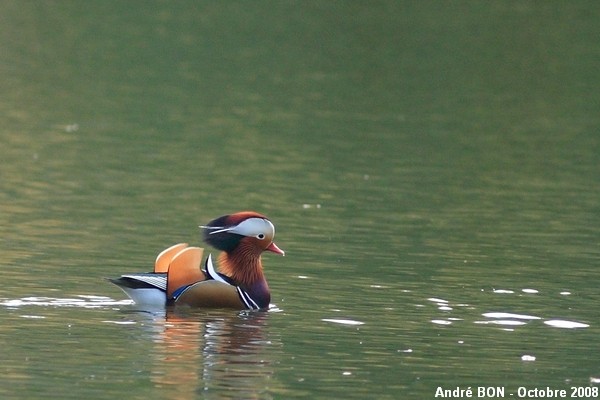
|
Mandarin Ducks are really very beautiful birds. It's easy to understand that they were brought to Europe for collections. Those that I observe over there have escaped and can be considered as wild birds. |
| [To know more about the Mandarin Duck] [Next picture] [Previous picture] [Top] |
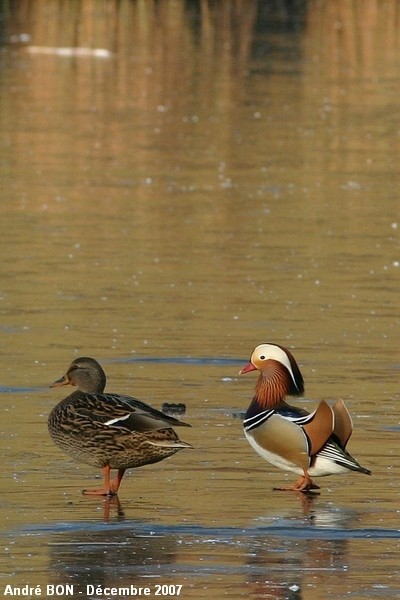
|
One Mandarin Duck has sneaked into the group of Common Mallards that are standing on the frozen pond. This is a beautiful bird, isn't it? Female Common Mallards do not seem to be indifferent. |
| [To know more about the Mandarin Duck] [Next picture] [Previous picture] [Top] |
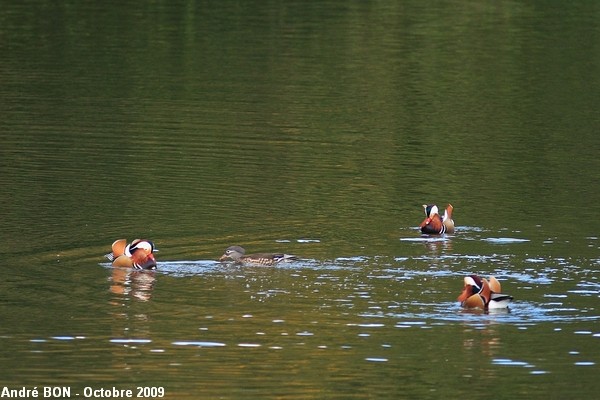
|
I hadn't seen any Mandarin Duck on this pond since this day of October. I have watched this small round dance with one female courted by three males before choosing her beloved. |
| [To know more about the Mandarin Duck] [Next picture] [Previous picture] [Top] |

|
Has the female already made her choice? It seems to me that it is pushing back one male. |
| [To know more about the Mandarin Duck] [Next picture] [Previous picture] [Top] |
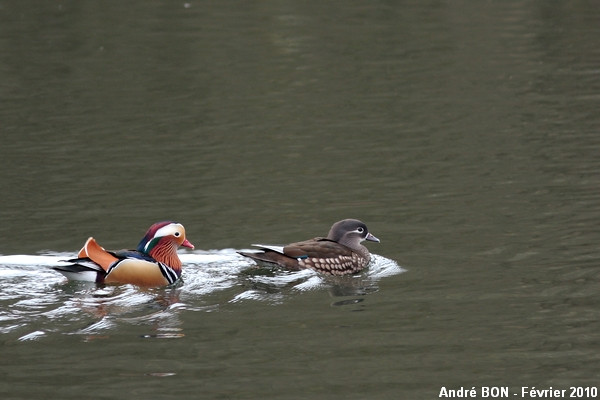
|
These ponds, bordered by the forest, seems to be a suitable place for the Mandarin Ducks to nest. When will I observe a beautiful brood? |
| [To know more about the Mandarin Duck] [Previous picture] [Top] |
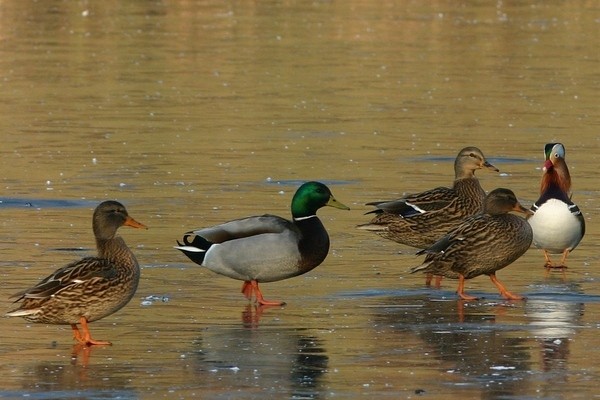
|
The Common Mallard soldiers are parading in front of the Mandarin general himself. |